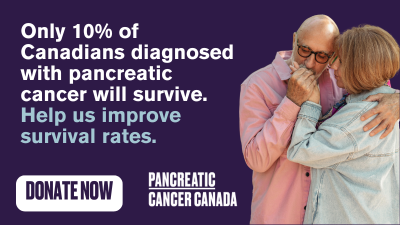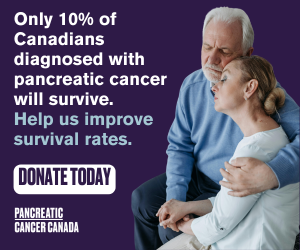How does this medication work? What will it do for me?
Naloxone belongs to the class of medications called opiate antagonists. It is used to reverse or prevent the effects of too much narcotic medication (codeine, fentanyl, morphine, oxycodone) having been taken. It works by blocking the activity of the narcotic medication, reversing the effects of the narcotic that may be life threatening. Signs of a narcotic overdose include trouble breathing, extreme drowsiness, pale and clammy skin, slow or no heartbeat, difficulty waking up, or unconsciousness.
Depending on how it is given, naloxone may begin to work as quickly as 1 to 5 minutes after it has been given.
This medication may be available under multiple brand names and/or in several different forms. Any specific brand name of this medication may not be available in all of the forms or approved for all of the conditions discussed here. As well, some forms of this medication may not be used for all of the conditions discussed here.
Your doctor may have suggested this medication for conditions other than those listed in these drug information articles. If you have not discussed this with your doctor or are not sure why you are taking this medication, speak to your doctor. Do not stop taking this medication without consulting your doctor.
Do not give this medication to anyone else, even if they have the same symptoms as you do. It can be harmful for people to take this medication if their doctor has not prescribed it.
What form(s) does this medication come in?
4 mg/0.1 mL
Each sprayer containing 0.1 mL of aqueous solution for intranasal administration contains 4 mg of naloxone. Nonmedicinal ingredients: benzalkonium chloride, disodium ethylenediaminetetraacetate (stabilizer), sodium chloride, hydrochloric acid to adjust pH, and purified water.
How should I use this medication?
Before using this medication, call 9-1-1 to request emergency medical assistance. This medication should not be used as a substitute for professional medical care.
Naloxone nasal spray is available as a 4 mg spray device. If the person responds to the first dose, but overdose symptoms reappear before emergency help arrives, administer additional doses of naloxone. If the person does not respond to the first dose of naloxone after 2 to 3 minutes, administer repeated doses of naloxone as necessary.
Each nasal spray device contains a single dose of naloxone and cannot be reused. To administer naloxone nasal spray, place patient on their back. Support the back of the neck to allow the head to tilt back. Ensure the device nozzle is inserted in either nostril and press firmly on the device plunger. Remove the device nozzle after use.
If repeat doses are needed, alternate nostrils for each dose.
If you are not sure how to use the nasal spray, or have questions about how to use it, contact your doctor or pharmacist. Before using this medication, thoroughly read the patient information provided and ask your doctor if you have any questions.
Store this medication at room temperature, protect it from light, and keep it out of the reach of children. Do not expose it to extremes of heat or cold temperatures.
Do not dispose of medications in wastewater (e.g. down the sink or in the toilet) or in household garbage. Ask your pharmacist how to dispose of medications that are no longer needed or have expired.
Who should NOT take this medication?
Do not take this medication if you are allergic to naloxone or any ingredients of the medication.
What side effects are possible with this medication?
Many medications can cause side effects. A side effect is an unwanted response to a medication when it is taken in normal doses. Side effects can be mild or severe, temporary or permanent.
The side effects listed below are not experienced by everyone who takes this medication. If you are concerned about side effects, discuss the risks and benefits of this medication with your doctor.
The following side effects have been reported by at least 1% of people taking this medication.
- chills
- dizziness
- fever
- headache
- irritability
- muscle spasms
- nasal congestion (nasal spray only)
- nervousness
- restlessness
- swelling or dryness in the nose (nasal spray only)
- symptoms of opioid withdrawal:
- aggressive behaviour
- blood pressure changes
- diarrhea
- fast or irregular heartbeat
- nausea
- pain
- runny nose
- seizures
- sweating
- tremor
- vomiting
Are there any other precautions or warnings for this medication?
Before you begin using a medication, be sure to inform your doctor of any medical conditions or allergies you may have, any medications you are taking, whether you are pregnant or breast-feeding, and any other significant facts about your health. These factors may affect how you should use this medication.
Non-opioid overdoses: This medication does not reduce the effects of an overdose caused by other medications such as barbiturates, benzodiazepines, stimulants, alcohol, or other sedatives. Giving this medication to a person who is unconscious due to a non-opioid overdose is not likely to cause them more harm.
Opioid dependence: When given to a person who has been using opioids for a long time, naloxone may cause withdrawal symptoms similar to stopping the opioid suddenly. These symptoms can include body aches, diarrhea, nausea, nervousness, restlessness, runny nose, sneezing, goose bumps, shaking, shivering, nausea, stomach cramps, fast or irregular heart rate, fever, sweating, increased blood pressure, and possible seizures.
Rebound opioid toxicity: The effects of naloxone are shorter than the effects of opioids. As a result, symptoms of overdose may reappear when naloxone wears off. Additional doses of naloxone may be required.
Recent surgery: This medication should be used with caution in someone who has had recent surgery. Side effects such as blood pressure changes, increased heart rate, irregular heartbeat, fluid build-up in the lungs and heart attack have been reported.
Pregnancy: The effects of naloxone on a developing baby are unknown. This medication should not be used during pregnancy unless the benefits outweigh the risks.
Breast-feeding: It is not known if naloxone passes into breast milk. If you are a breast-feeding mother and are taking this medication, it may affect your baby. Talk to your doctor about whether you should continue breast-feeding.
What other drugs could interact with this medication?
There may be an interaction between naloxone and any of the following:
- methylnaltrexone
- naloxegol
If you are taking any of these medications, speak with your doctor or pharmacist. Depending on your specific circumstances, your doctor may want you to:
- stop taking one of the medications,
- change one of the medications to another,
- change how you are taking one or both of the medications, or
- leave everything as is.
An interaction between two medications does not always mean that you must stop taking one of them. Speak to your doctor about how any drug interactions are being managed or should be managed.
Medications other than those listed above may interact with this medication. Tell your doctor or prescriber about all prescription, over-the-counter (non-prescription), and herbal medications you are taking. Also tell them about any supplements you take. Since caffeine, alcohol, the nicotine from cigarettes, or street drugs can affect the action of many medications, you should let your prescriber know if you use them.
All material copyright MediResource Inc. 1996 – 2024. Terms and conditions of use. The contents herein are for informational purposes only. Always seek the advice of your physician or other qualified health provider with any questions you may have regarding a medical condition. Source: www.medbroadcast.com/drug/getdrug/Narcan-Nasal-Spray



